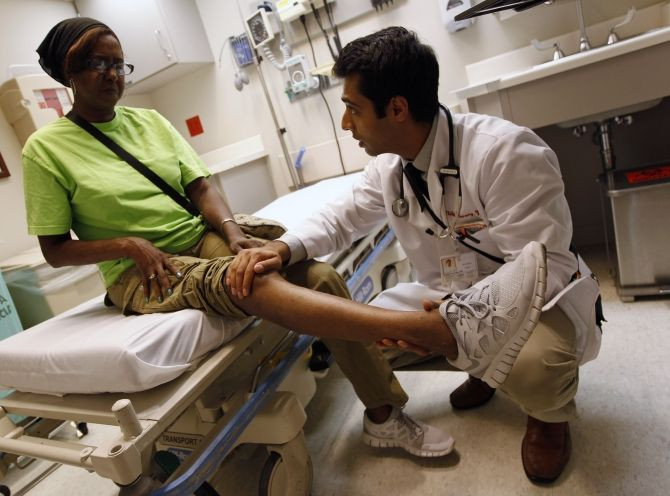General Medicine Students Choosing Specialty Over Primary Healthcare

Many internal medicine students are now opting for gaining specialty instead of primary care, says a new study.
The study included 17,000 third-year internal medicine residents in 2009, 2010, and 2011. Students were asked about their career plans. One in five residents or 21 percent of the study group said they want to pursue a career in general internal medicine. Women were more likely to take up primary healthcare than men.
"This is worrisome. In the next decade, we will be 50,000 primary-care physicians short for the needs of the country," said study author Dr. Colin West, an internist at the Mayo Clinic in Rochester, Minn., reports HealthDay.
Researchers didn't find why the medical students are opting to go in for specialties. Some of the factors may be money and more work-life balance. West said that a general internist may make about $200,000, while a specialist such as a cardiologist makes twice that amount in a year. Also, primary healthcare internists need to be "on call" all the time while a medic in a specialty field may work for a fixed number of hours every day, WebMD reported.
"Combined with the fact that only a small minority of medical students express interest in general medicine and primary care careers, the small number of internal medicine residents reporting plans for generalist careers means a very limited number of generalists can be expected to enter practice each year," said the study's authors, Drs. Colin West and Denise Dupras of The Mayo Clinic, reports Forbes.
The limited number of internists entering general medicine along with Affordable Care Act will only increase the problems faced by the primary health field. "We will need even more primary-care physicians as the foundation of care and we are not generating enough," West said, reports HealthDay.
Experts say that reducing the amount of paperwork and negotiation with healthcare insurers may help make primary healthcare more appealing to internists. Also, debt forgiveness may boost the number of medical students taking primary healthcare.
"We haven't done enough yet to encourage more folks to go into primary care. The elephant in the room is reimbursement. Today's primary-care physicians spend 60 percent of their time doing activities that are not currently reimbursed," Dr. Cynthia Smith, senior medical associate for content development at the American College of Physicians, told HealthDay.
The study is published in the Journal of American Medical Association.



























